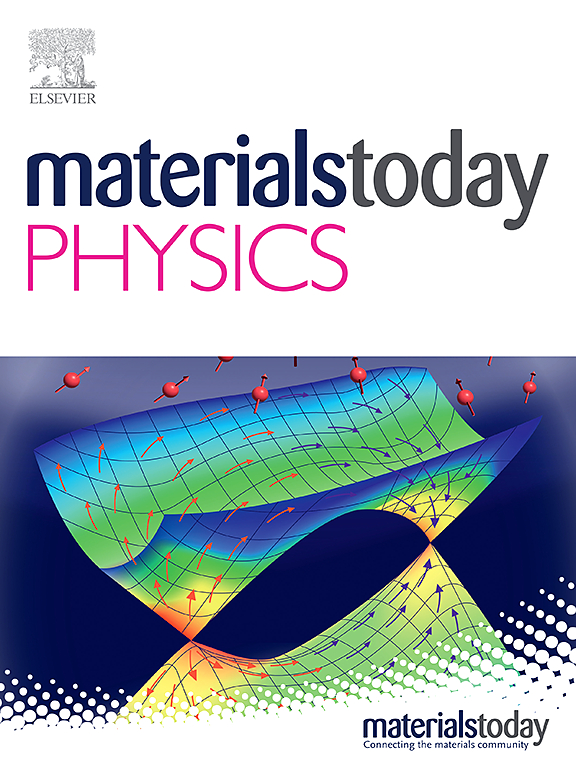Theoretical predictions of MB5N5: Atom-stuffed boronitride clathrate cages derived from the high-pressure superhydrides
IF 10
2区 材料科学
Q1 MATERIALS SCIENCE, MULTIDISCIPLINARY
引用次数: 0
Abstract
This study investigates 198 (, = B, C, or N) clathrate-like structures derived from H10 superhydrides using high-throughput Density Functional Theory (DFT) geometry optimizations and phonon calculations. A wide variety of electropositive and electronegative encapsulated atoms were considered. From all of the studied systems only 34 BN phases were found to be dynamically stable at ambient pressure. The highest 1-atmosphere superconducting critical transition temperature was predicted for FBN. However, ab initio molecular dynamics simulations revealed that all of the identified superconducting phases decompose by 300 K at 1 atm, while only eleven semiconducting phases remained thermally stable. Our findings underscore the critical role of kinetic and thermal stability in predicting viable superconductors. The electronic structure of the BN compounds were rationalized in terms of electron donating and withdrawing intercalants. DFT and machine-learning based predictions of their mechanical properties were compared with those of an empty boronitride cage.
MB5N5的理论预测:高压超氢化物衍生的填充硼氮笼状物
本研究利用高通量密度泛函理论(DFT)几何优化和声子计算,研究了MH10超氢化物衍生的198个MX5Y5 (X, Y = B, C或N)笼状结构。考虑了各种各样的电正性和电负性封装原子。在所研究的体系中,只有34个MB5N5相在环境压力下是动态稳定的。预测了FB5N5的最高1大气压超导临界转变温度。然而,从头算分子动力学模拟表明,所有确定的超导相在1atm下分解300 K,而只有11个半导体相保持热稳定。我们的发现强调了动力学和热稳定性在预测可行超导体中的关键作用。从给电子和吸电子插入剂的角度对MB5N5化合物的电子结构进行了理顺。将基于DFT和机器学习的机械性能预测与空氮化硼笼的力学性能预测进行比较。
本文章由计算机程序翻译,如有差异,请以英文原文为准。
求助全文
约1分钟内获得全文
求助全文
来源期刊

Materials Today Physics
Materials Science-General Materials Science
CiteScore
14.00
自引率
7.80%
发文量
284
审稿时长
15 days
期刊介绍:
Materials Today Physics is a multi-disciplinary journal focused on the physics of materials, encompassing both the physical properties and materials synthesis. Operating at the interface of physics and materials science, this journal covers one of the largest and most dynamic fields within physical science. The forefront research in materials physics is driving advancements in new materials, uncovering new physics, and fostering novel applications at an unprecedented pace.
 求助内容:
求助内容: 应助结果提醒方式:
应助结果提醒方式:


